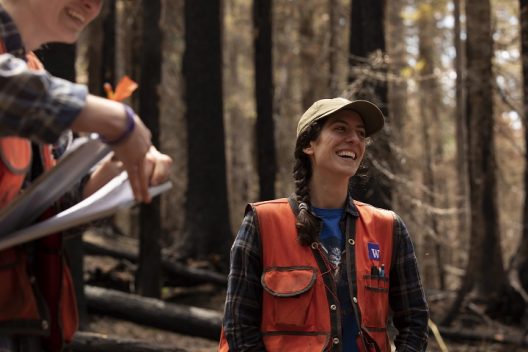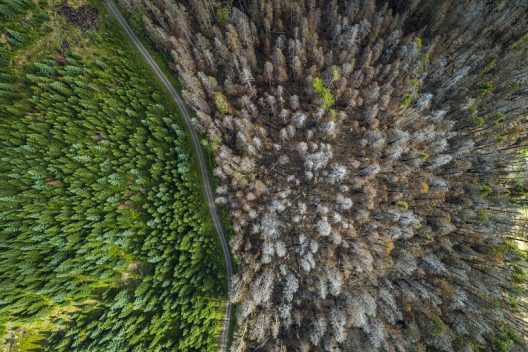When wildfires cross a landscape, the severity of the burn isn’t uniform over the area impacted. Areas where most or all trees are killed by fire are considered “high severity burns.” The shape and size of high severity burned patches within fires play an important role in forest resilience and fire regimes, and have been difficult to predict.

New research led by recent SEFS alumna Michele S. Buonanduci, a member of SEFS Associate Professor Brian Harvey’s lab, identifies a method to predict burn severity for future fires by looking at the relationship between fire size and patterns of burn severity. The researchers used data from over 1600 fires occurring in the Northwest US between 1985 and 2020 to see how relationships between fire size and severity vary across space and time, and found that the larger the fire, the higher the likelihood of large, contiguous, simple patches of high severity burned area. This relationship was consistent across the Northwest US and throughout the 35-year satellite record used in the study. Published in Ecology Letters, these findings provide a way to predict fire severity and impact based on projected fire sizes for near-term fires.
“It’s really difficult to plan for future fire activity if we don’t have a sense of what these fire severity patterns might look like,” said Buonanduci.
Given the complexity of the factors that influence fire severity, including topography, vegetation type, and weather, projecting future burn impacts is challenging. “A really wide range of severity levels and patterns are possible at any given landscape and just might depend on the weather at the time of burning,” said Buonanduci.
With collaborators from the Washington Department of Natural Resources, Buonanduci and her co-authors sought to anticipate the types of spatial patterns we might see in future fires, given projections for fire size.
Fire severity directly affects post-fire seed availability and dispersal, rates of forest regeneration, carbon uptake, and landscape change to non-forest. When you have large, contiguous high severity burn areas, forests are more likely to transition to non-forest vegetation as it’s more difficult for the remaining unburnt seed sources to reach the interior of the burn area than it would be in smaller, patchy burn areas.
“Those high severity patches are often where management intervention is most needed in terms of replanting with tree seedlings following fire. So having a sense of the range of ecological effects we might expect is going to be really important for forest managers working in a variety of contexts,” said Buonanduci.

Already, the results of this work are in use to better prepare land managers and communities for future fires. Buonanduci and her collaborators are using their findings to make projections for potential ecological effects of fire in western Washington and northwestern Oregon in the near future.
Co-authors on the study included Daniel Donato and Joshua Halofsky, SEFS affiliate assistant professors with the Washington State Department of Natural Resources, and SEFS alumna Maureen Kennedy, associate professor of quantitative wildfire ecology at the School of Interdisciplinary Arts and Sciences at UW Tacoma.
This work was funded by a US Geological Survey Northwest Climate Adaptation Science Center award and a Graduate Research Innovation award from the Joint Fire Science Program.